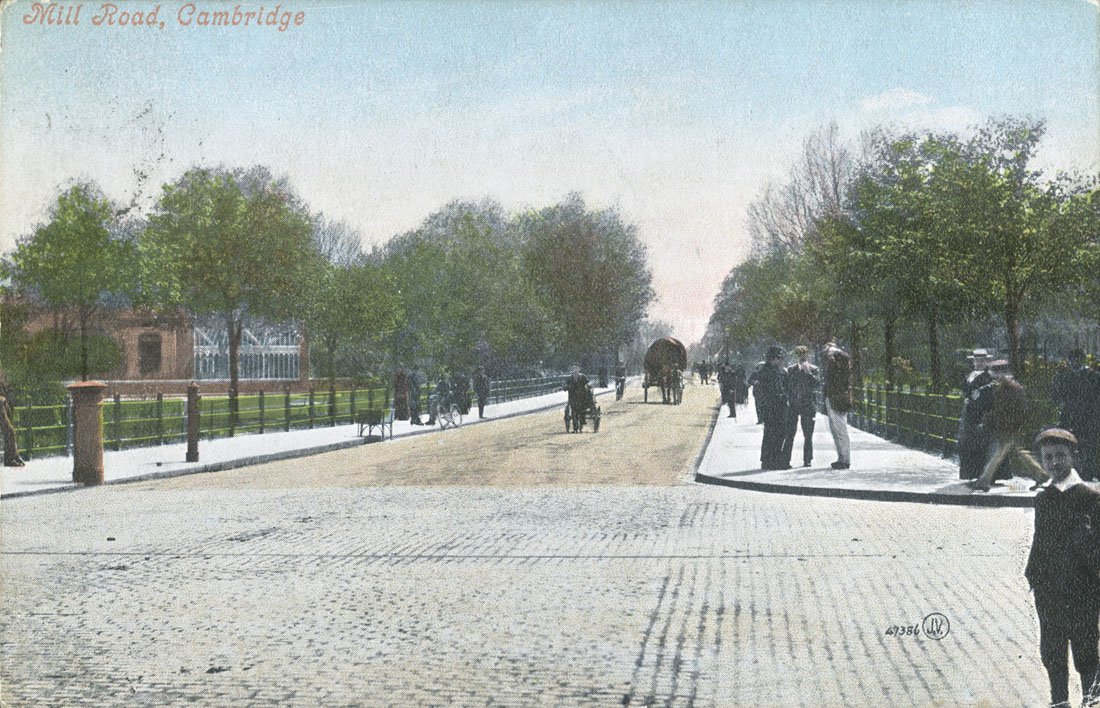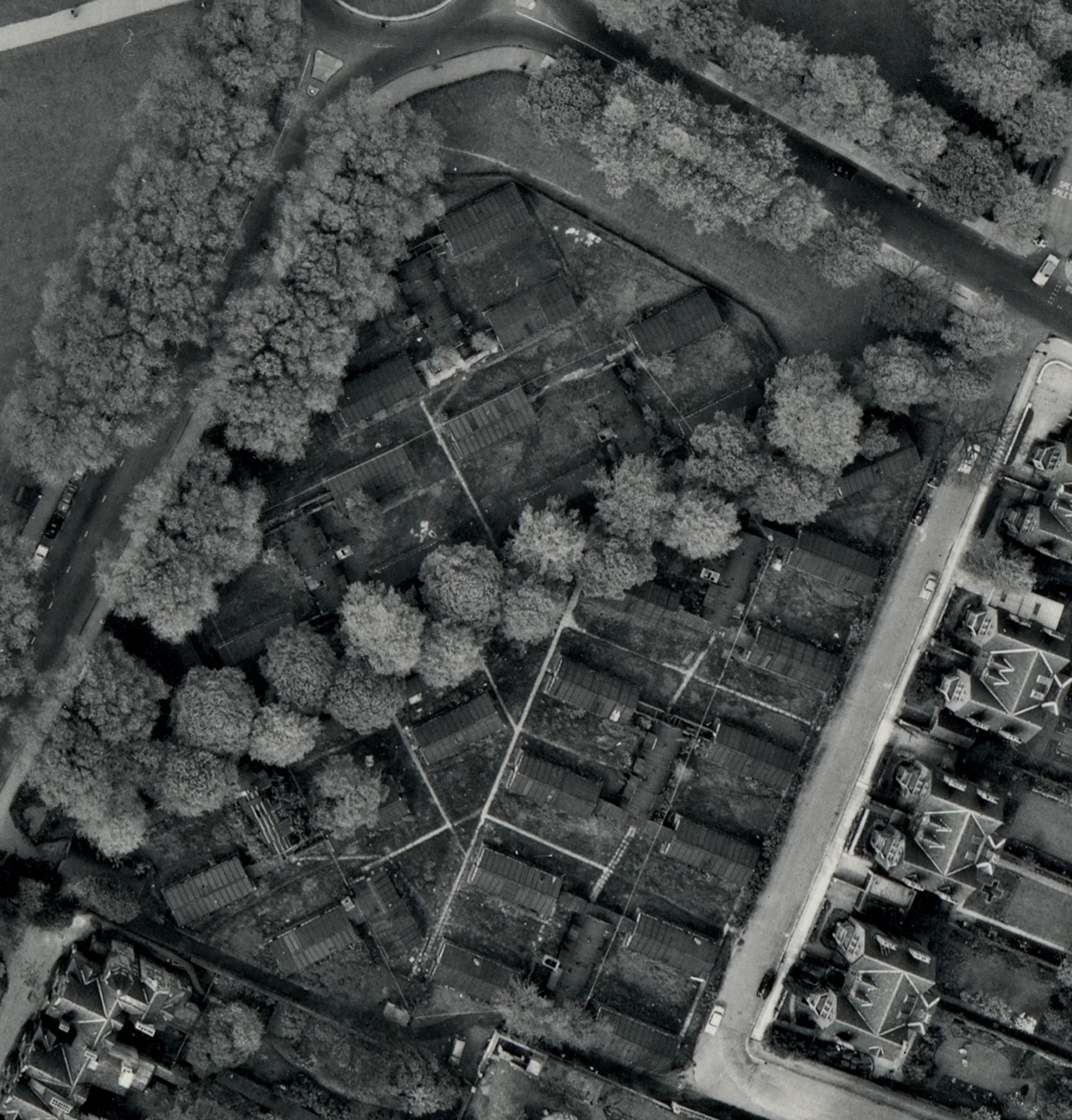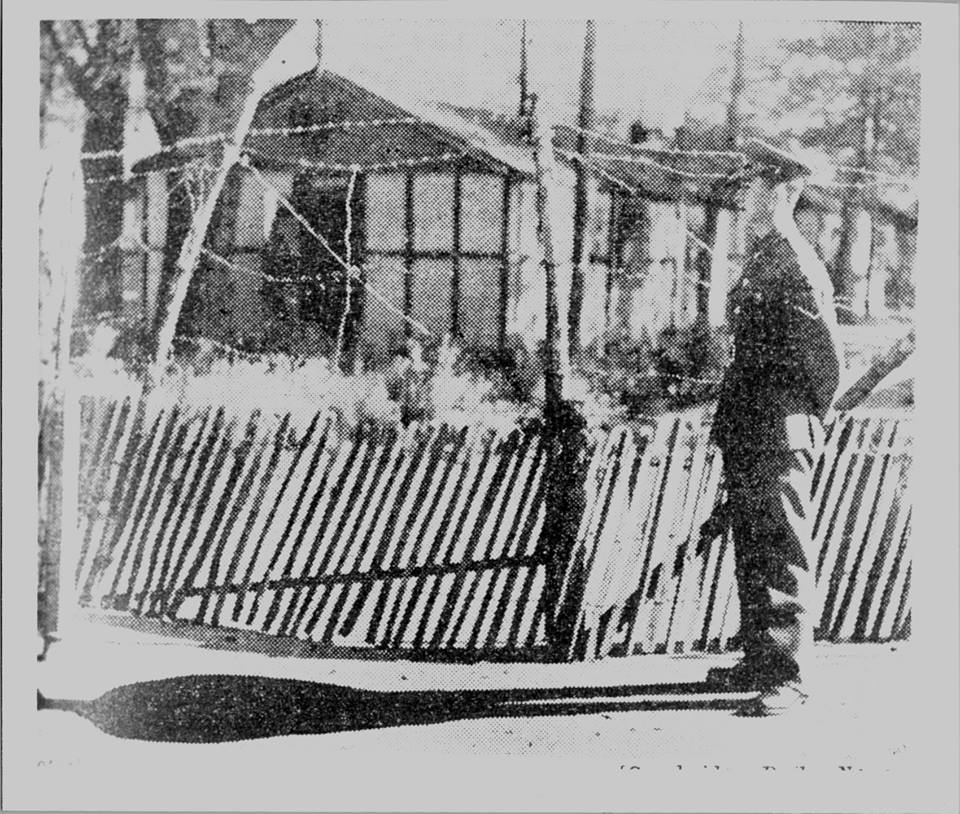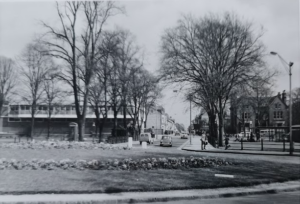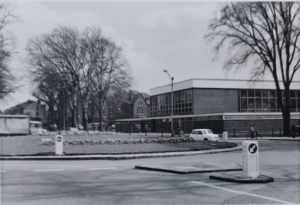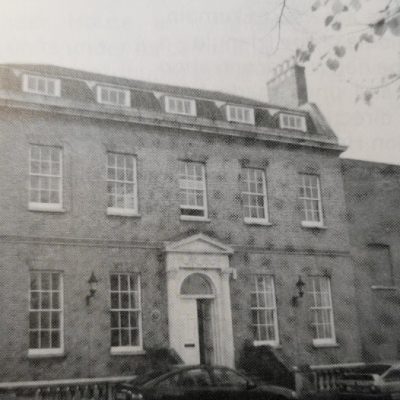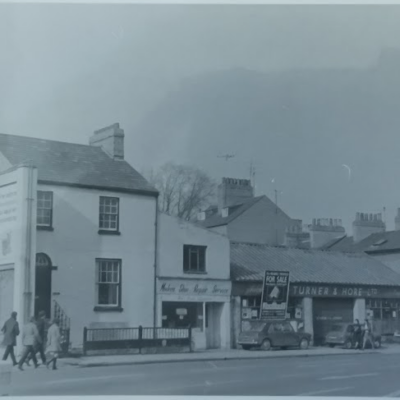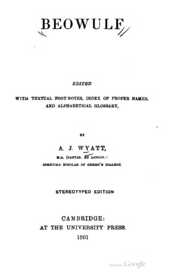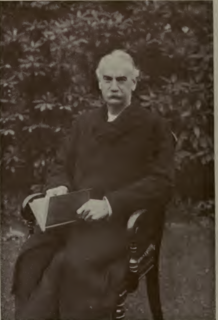Search by topic
- archaeology
- architecture
- bricklayer
- Building of Local Interest
- carpenter
- church
- crime
- dressmaker
- fire
- Great Eastern Railway
- listed building
- medieval
- oral history
- Public House
- Rattee & Kett
- Religious House
- Roman
- scholar
- school
- Then and Now
- tudor
- women
- work
- world war one
- world war two
Search by text
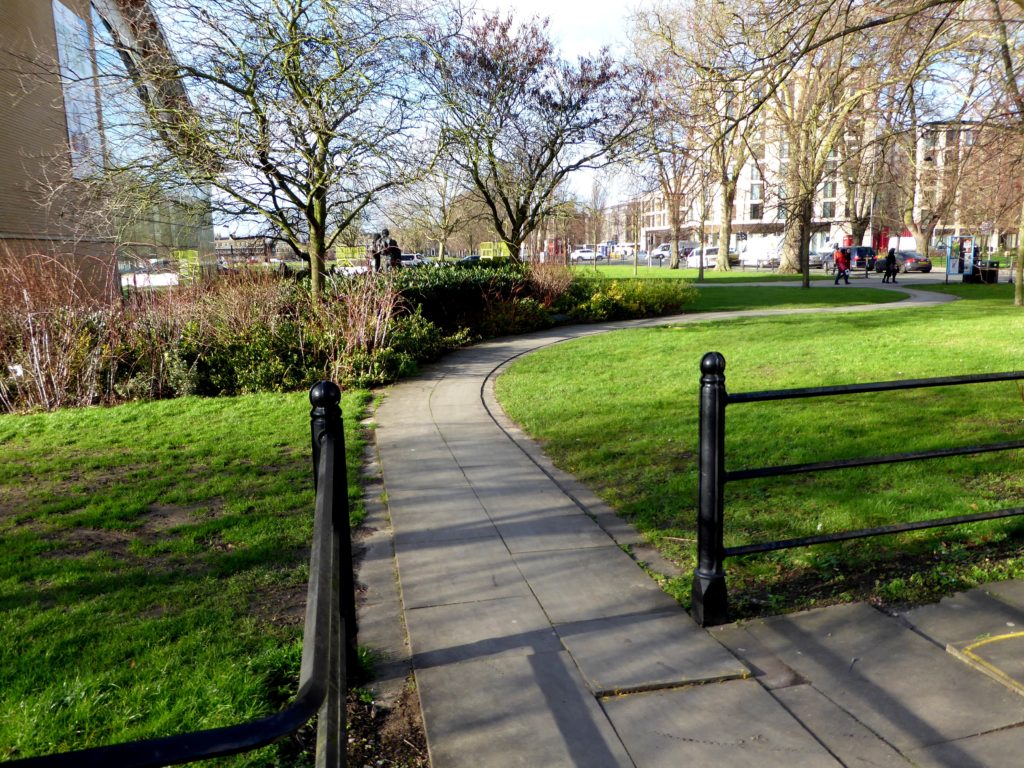 Donkey's Common 2016. Photo by Allan Brigham
Donkey's Common 2016. Photo by Allan BrighamDonkey’s Common
Common land, ATS Huts and emergency housing
The 1812 Inclosure Map contains an area labelled as ‘Second Allotment for a Common Pasture’ bounded by Gonville Place, Mill Road, Mortimer Road, Fenner’s Cricket Ground car park and Owen Webb House. This page describes the history of the eastern section, known as Donkey’s Common.
You can read the full history of the Second Allotment in the report Donkey’s Common and adjacent land.
Watch Caro Wilson talk about the history of Donkey’s Common.
Timeline
1807 Barnwell Inclosure Act, Second Allotment for a Common Pasture
1829 Common Pasture shrunk when Town Gaol built on western half
1841 Proposed Site for Cemetery
1859 Proposed Site for Cattle Market
1859 Proposed Site for Housing
1862 First known use of the name Donkey’s Common in a newspaper
1863 Proposed Site for Railway
1870 Proposed Site for Housing (again)
1873 Proposed Site for Cattle Market (again)
1876 Commons Act
1880 Bye Laws for Commons passed
1891 Iron railing installed
1896 End of grazing on the common – for recreation only
1922 Cambridge Corporation formed
1942 Requisitioned for Auxiliary Territorial Service huts
1946 ATS huts threatened by squatters
1950 ATS huts converted into emergency housing
1960 Work started on swimming pool
1963 Swimming pool opens
1997 Pool closes and work on new pool starts
1999 New swimming pool opens
2003 Skateboard park opens
Did you know?
By the 1870s the growing population led to the common being used for carpet beating, with nearby residents objecting in 1875 that it was going on until early afternoon and requesting Bye Laws to prohibit it.
In the 1880s turf was regularly cut from Donkey’s Common to repair the cricket pitches on Parker’s Piece as the state of the pitch was more important than that of the common.
The old Parkside pool finally closed in July 1997 with the Mayor swimming the last length at a special ceremony.
No one really knows why it is called Donkey’s Common.
1828–1900 Common land
In the Barnwell Award to the 1807 Barnwell Inclosure Act, there were three allotments described as “[to] be used and enjoyed as and for a Common Pasture to this Our Award and their respective Heirs and Tenants in respect of the Estates also mentioned in the said Schedule”. However less than twenty years later the size of the Second Allotment was significantly reduced as the town authorities sought a site for a new gaol. This was to be only the first of many proposals to build public facilities on land originally designated ‛common pasture’.
The story of the western side of the allotment is described in full in the report and summarised on other pages.
The remaining part of the allotment, covering what is now the swimming pool as well as what is left of the common, stayed largely unchanged until 1900, despite many proposals for building on it as shown in the timeline above.
For most of this period it was used by local people for grazing their livestock as well as a pedestrian route into town. As the town expanded and the number of people living down Mill Road grew then clashes were inevitable. An incident in 1889 when two members of staff at Ayerst Hall (now St Edmund’s College) were knocked over by a horse was used by the Cambridge Independent Press to campaign for grazing to be discontinued.
Finally in August 1896 the Council resolved ‛that it considered it desirable that steps be taken to improve and beautify the two Commons known as Donkey’s Common and Petersfield, and that it be referred to the Commons Committee to consider and report as to the steps to be taken for carrying out this work’.
In 1898 it was reported that ‛Donkey’s Common has been improved in appearance by the making of beds where I hope as spring advances to see flowers blooming’, and together with new granolithic paving near Petersfield the writer stated that ‛the entrance to Mill Road will soon be a credit to the town’.
1900–1942 A local park
For the next four decades the common served as a recreation ground and as an attractive, tree-lined route approaching and leading away from Mill Road. Cattle no longer grazed on the grass, although they were still walking down Gonville Place. In 1902 one tried to jump the railings from the road on to the common and had to be rescued after getting stuck. In the same year a temporary Bandstand was erected on the common as part of the extensive celebrations to mark the Coronation of Edward VII. The Salvation Army Band played for two hours, and afterwards it was reported that ‛one of the best features of the celebrations were the promenade concerts’.
Incidents were rare, and were typical of those associated with all open spaces. Amongst these were cases like that of 38-year-old Arthur Allen, an engine fitter, who in February 1907 was charged with being ‛drunk and incapable’ after being found asleep on the common and incapable of standing when lifted up. Other incidents included students riding bikes on the footway and boys playing cricket, which led to the Custodian being asked ‛to make the big boys desist from playing on Donkey’s Common and go on to Parker’s Piece’.
1942–1945 ATS Huts
It is often stated that Cambridge was unaffected by World War Two. But the war was a constant presence and one of the most visible reminders for many was the transformation of the green grass of Donkey’s Common into a camp for the women’s branch of the British Army, the Auxiliary Territorial Service (ATS).
Speaking after the war the Secretary of State for War, Emanuel Shinwell, stated that there were forty-three huts on the common, intended to accommodate three officers and 224 ‛other ranks’. The huts were wooden and were laid out in ‛H’ formations, with washing facilities in the middle of each group.
Yvonne Archer, one of the ATS recruits, described the interiors:
Inside there were wooden beds, and we slept on biscuits — a kind of mattress divided into three.
There was a stove pipe in the middle of the hut and a coal bin. In true Army style we dusted the coal for inspections. It was easier to conform rather than argue the toss.
Our bedding had to be ‛barracked’ each morning with a sandwich of sheets, pillows and blankets ina set order. Huts were inspected each day and there was trouble if the least little thing was wrong.
For many, part of the experience was meeting young men and romance. Mrs J. Jenner came to Cambridge from Yorkshire. She was stationed on Donkey’s Common while working on tanks, scout cars and bren gun carriers at the ATS depot near The Golden Hind on Milton Road. When she was later posted to Guildford and had a weekend pass she ‛wrote to my then boy friend (later my husband) and he would book a double room for me and my friend, Punchy, at the Central Hotel. We had to go down the side to get in. Our room was looking out on the Guildhall and the market.’ Like others from the Donkey’s Common camp she later married her boy friend and settled in the area.
In 2022 LR sent an email: My mother Margaret (Peggy) Grundy was the sergeant cook in charge of the kitchen during WW2 on Donkey Common. She told me that she would wait for the local Bobby to switch on the lights in the kitchen first thing in the morning to get rid of the cockroaches. The police man was rewarded with a bacon sarnie. Many of the local services like fire wardens also knew to come to the kitchen for a snack and a cuppa. Mum also married a local man Frank Short, they lived on and around Mill Road for the rest of their lives. Mum was a keen swimmer and swam at Parkside Pool and trained swimmers for many years. She is now buried in Newmarket rd cemetery along with her husband. My brother and I both swam for the Cambridge swim teams and trained regularly at Parkside, so there is a close link to our family and Donkeys Common.
1946–1962 Emergency Housing
At the end of the World War 2 as servicemen returned home the housing shortfall stood at over 2 million. In May 1946 the scarcity of suitable housing led to a family in Scunthorpe taking over nearby abandoned military buildings. In total more than 45,000 people were involved in the takeover of most of the military camps in Britain.
By September 1946 the movement had spread to Cambridge and the Cambridge Daily News highlighted the threat posed by the squatters movement with the publication of a picture of a soldier guarding the camp on the Common from incursions (photo above). The caption read: ‛The Shadow of Authority! ‒ A Military Policeman is daily guarding the wire-barricaded hutments on Donkey’s Common, making sure that the ATS do not get any squatter neighbours.’
In February 1949 Cambridge Borough Commons Committee resolved ‛That town clerk be instructed to make representations to the appropriate authority for the release of the common from present requisitioning’. Despite initial resistance in January 1950 the Ministry of Health agreed to hand the whole camp over to the Borough Council for emergency accommodation. Huts were to be made habitable at a rate of four a week. By October sufficient tenants appear to have been living on the common to request that TV aerials be erected.
Mrs Edna Murfet said that her family were the first to move into the refurbished huts.
We were living in one room in Park Street with my son who was about eight. After over a year the Council lady came to see me and ask if I or my husband liked gardening. He did not but I did so I said yes.
She gave us the very first hut inside the gate, the first people on there, only if I could make a garden and hut nice for a show hut. I put large stones all round the piece of ground we had, and stones up to each little window to make a path to clean the windows, and painted them all white and put rose bushes in; it looked quite pretty.
It took 42 square yards of lino to cover the living area, which was their sleeping quarters; the end of hut was curtained off for bedroom for us; and other side for my son.
I loved being there so central for town, and my husband loved cricket on Fenner’s and [the] Piece.
My son liked playing Cowboys and Indians, when other people came to live there, all along the corridors which divided us from our neighbours.
A young child living in the huts was Simon Thorpe, who recalls:
I was only around 3 yrs old when I left there, but I do have a few strong memories and impressions: I remember having conjunctivitis badly so that my eyelids were glued together on awaking and I used to feel my way to my parents room for help, so it was clearly a small space that enabled me to do that. I also remember an uncle coming to visit from South Africa and I remember how crowded we seemed in the living room.
A particularly unpleasant memory is when I wanted to use the toilet after dark. This was an outside facility and it may have been shared but I’m not sure. It must have been really close by, though, because my parents would give me toilet paper and open the door for me to go out on my own, and I remember vividly how frightening I found the dark.
Other memories are of watching the bin men through a wire fence ‒ one made a face at me.
I don’t remember much about other people there, other than one or two children my elder brother and I played with. We seemed to be outdoors a lot ‒ mud pies were made, my head was cut by a thrown stone, and a girl, Jeanette, bit a snail!’
The huts were always intended as temporary emergency accommodation, and by 1953 the Borough Commons Committee was pressing that the ‛Housing Committee be asked not to re-let huts when they become vacant so that the Common may be de-requisitioned at the earliest possible date’. The planning permission for use as housing was only until September 1957 although later extended until October 1958.
Meanwhile the Council was under pressure to provide a modern indoor swimming pool and saw Donkey’s Common as an ideal site. Work finally started on Parkside Swimming Pool in December 1960, five years after the Council had agreed to its being built.
More info
- Read the complete report on Donkey’s Common and adjacent land
Contribute
Do you have any information about the people or places in this article? If so, then please let us know using the Contact page or by emailing capturingcambridge@
License
This work is licensed under CC BY-NC-SA 4.0








